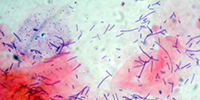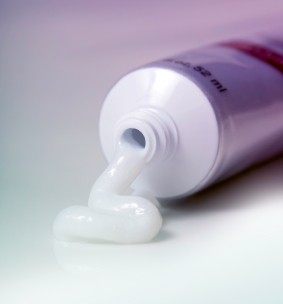What is thrush and how does it come about?
Thrush is caused by the common yeast Candida in the vagina. Candidal organisms are almost always present in small numbers in all people, particularly in warm and moist parts of the body such as the vagina and its surrounding vulval skin. The organisms are usually prevented from growth and multiplication (resulting in symptoms) by the immune system, and the competition from the other harmless bacteria that are present in the vagina.
Occasionally, this delicate balance may be disturbed by a temporary impairment of the local immune system, or a reduction, or elimination of the other bacteria that compete with Candida. Any of these changes will promote the growth and multiplication of Candida. When this occurs the characteristic symptoms and signs of thrush appear such as itches in the vagina and surrounding areas.
Normal yeast in the vagina

Thrush in the vagina

How is thrush treated?

However, it is important that the first attack is confirmed by the doctor and other causes of the symptoms excluded before self-treatment approach is adopted in the long term. If symptoms are not typical or become recurrent, then the woman needs to see her doctor and be fully examined and tested to confirm the cause of the discharge.
What should I do if my vagina is itchy?

If symptoms are not typical or become recurrent, then the woman needs to see her doctor and be fully examined and tested to confirm the cause of the irritation or discharge. For more details click on Recurring thrush.
Austin Ugwumadu has a special interest in this area. You can ask your doctor for a referral to his clinic at St Georges Hospital in Tooting, London or you can see him privately at Parkside Hospital beside Wimbledon Common, London or Newlife clinic in Epsom, Surrey.
My thrush keeps coming back what should I do?
If you have four or more attacks in one year. It may be that there is an underlying problem that may need to be treated differently. If so please go to our Recurrent thrush page.
